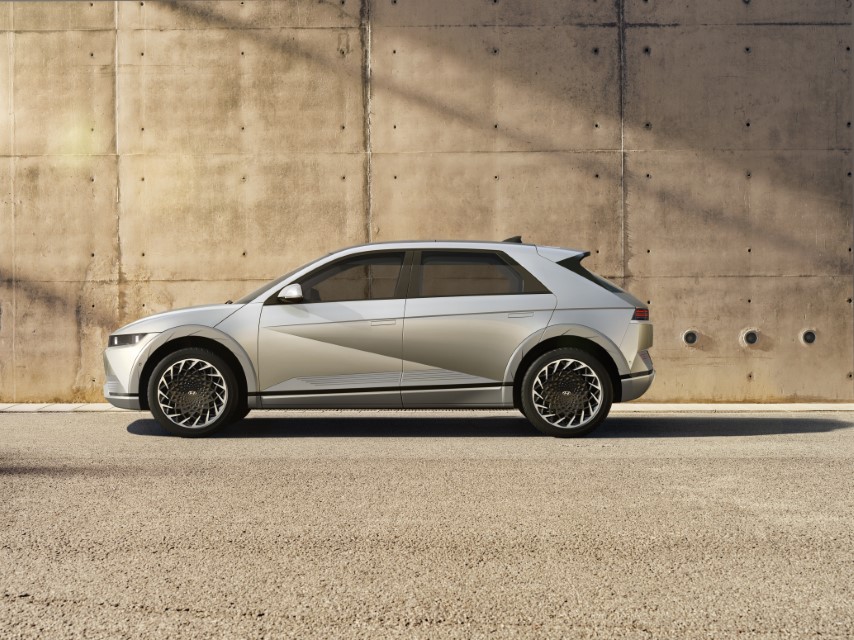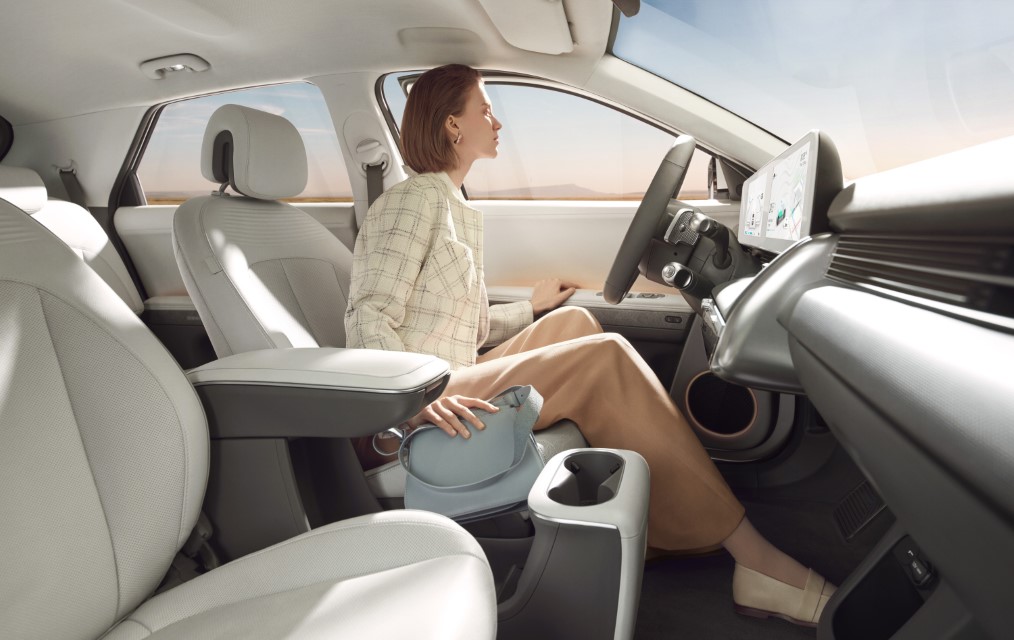SEOUL: Hyundai launched the IONIQ 5 on Monday during a virtual world premiere event.
It's the first model in Hyundai’s new IONIQ brand dedicated to battery electric vehicles (BEV).
IONIQ 5 is built upon Hyundai Motor Group’s dedicated BEV architecture called Electric-Global Modular Platform (E-GMP), enabling it to have unique proportions on an elongated wheelbase.
With E-GMP, IONIQ 5 offers innovative interior design with eco-friendly materials in many touchpoints, strong performance mated with ultra-fast charging and a Vehicle-to-Load (V2L) function as well as advanced connectivity and driver assistance features that will offer the ultimate in-car experience while ensuring safety.

IONIQ 5’s unique exterior design is characterized by the Pony-inspired profile over a 3,000-mm wheelbase.
The front of the car is equipped with Hyundai’s first clamshell hood that minimizes panel gaps for optimal aerodynamics. The front bumper is defined by an eye-catching V-shape incorporating distinctive daytime running lights (DRLs) that provide an unmistakable light signature unique to IONIQ 5. These small pixel-like clusters also appear at the rear of the vehicle.
On the sides, auto flush door handles provide clean surface styling and enhanced aerodynamic efficiency.
The front and rear forms of the vehicle merge together at its doors, offering another example of Hyundai’s ‘Parametric Dynamics’ design first seen on the all-new Tucson. The strong C-pillar shape, inspired by Hyundai’s ‘45’ EV concept, gives IONIQ 5 a commanding presence clearly identifiable from a distance.
Aero-optimised wheels further echo the Parametric Pixel design theme and are offered in a super-sized 20-inch diameter, the largest rims ever fitted to a Hyundai EV. These complete IONIQ 5’s perfected proportions, optimized for Hyundai’s E-GMP.

The ‘Living Space’ theme runs throughout the interior, most notably embodied by the Universal Island, a moveable center console that can slide back as much as 140 mm. Universal Island, along with the flat floor where the batteries are stored, allows more freedom of movement inside the vehicle.
IONIQ 5 is also equipped with electronically adjustable front seats. The seats recline to the optimum angle, offering a weightless feeling for the occupant. Hyundai reduced the thickness of the front seats by 30 percent, providing more space for those seated in the second row.
Many of its interior touchpoints — seats, headliner, door trim, floor and armrest — use eco-friendly, sustainably sourced materials, such as recycled PET bottles, plant-based (bio PET) yarns and natural wool yarns, eco-processed leather with plant-based extracts, and bio paint with plant extracts.
Customers can choose from nine exterior colours, including five nature-inspired hues exclusive to IONIQ 5. The interior has three colour options.


IONIQ 5 is available with a range of power electric (PE) configurations. Customers can select from two battery pack options, either 58 kWh or 72.6 kWh, and two electric motor layouts, either with a rear motor only or with both front and rear motors. All PE variations provide outstanding range and deliver a top speed of 185 kph.
At the top of the electric motor lineup is an all-wheel drive (AWD) option paired with the 72.6-kWh battery, producing a combined power output of 225-kWh and 605 Nm of torque. This PE configuration can go from 0 to 100kph in 5.2 seconds.
When equipped with two-wheel drive (2WD) and 72.6-kWh battery, IONIQ 5’s maximum driving range on a single charge will be around 470~480 km, according to the Worldwide Harmonized Light Vehicle Test Procedure (WLTP) standard.

IONIQ 5’s E-GMP can support both 400-V and 800-V charging infrastructures. The platform offers 800-V charging capability as standard, along with 400-V charging, without the need for additional components or adapters.
The multi-charging system is a world’s first patented technology that operates the motor and inverter to boost 400 V to 800 V for stable charging compatibility.
With a 350-kW charger, IONIQ 5 can charge from 10 percent to 80 percent in just 18 minutes. IONIQ 5 users only need to charge the vehicle for five minutes to get 100km of range, according to WLTP.
IONIQ 5 also provides an innovative V2L function, which allows customers to freely use or charge any electric devices, such as electric bicycles, scooters or camping equipment, serving as a charger on wheels.

The V2L function can supply up to 3.6 kW of power. The V2L port is located under the second-row seats, and it can be activated when a vehicle is on. Another V2L port is located at the charging port on the vehicle exterior. Using a converter, customers can charge high-power electric equipment. The outside port provides power even when the vehicle is turned off.
The wide, configurable, dual cockpit features a 12-inch, full-touch infotainment screen and hoodless 12- inch digital gauge cluster that can be customized to meet customers’ needs.
For the first time in Hyundai, IONIQ 5 features an Augmented Reality Head-Up Display (AR HUD), essentially turning the windshield into a display screen.
IONIQ 5 is also equipped with the next level of Hyundai SmartSense, advanced driver assistance system, ensuring the highest levels of safety and convenience on the road. IONIQ 5 is the first Hyundai model to offer Highway Driving Assist 2 (HDA 2). Other driving assistance systems include Forward Collision-Avoidance Assist (FCA), Blind-Spot Collision-Avoidance Assist (BCA), Intelligent Speed Limit Assist (ISLA), Driver Attention Warning (DAW), High Beam Assist (HBA), and more.
IONIQ 5 will be available in selected regions starting in the first half of 2021.










